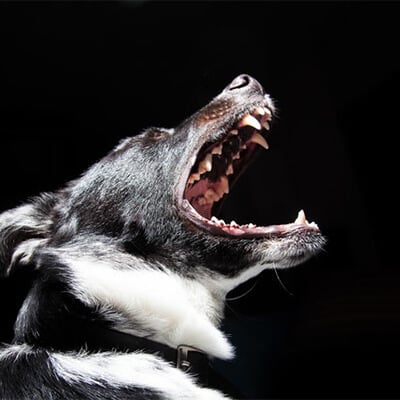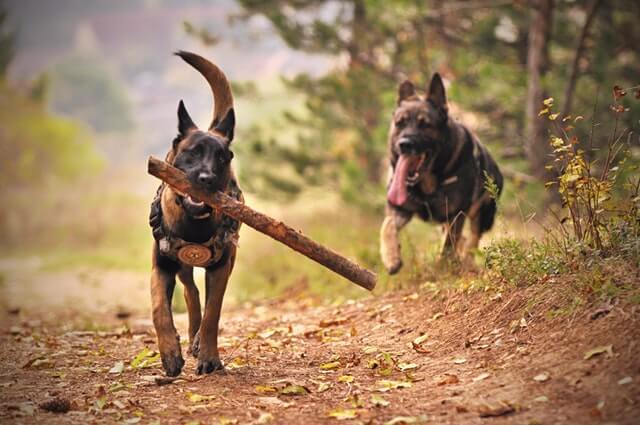Dogs are wonderful companions for people, but not every dog is well-mannered or plays well with others. In fact, the Centers for Disease Control estimates that over 4.5 million people are bitten every year, and an average of 1 in 5 people receive medical attention as the result of a dog bite. The reasons why people get bit are many, but some people wind up with traumatic injuries as the result of an interaction with a dog going wrong. Oftentimes, people take legal action from dog bite because an aggressive dog can do a lot of damage in a short amount of time. Following are some tips to help you avoid getting attacked by an aggressive dog.
Read the Dog's Body Language
Dogs are usually very good at telegraphing their intent through body language. A happy, relaxed dog has floppy ears, lolling tongue, and a wagging tail along with a curious attitude. An aggressive dog tends to not have much interest in the world around it, is always on the alert and visually scanning or staring, ears are up and listening, and keeps its tail stiff. The dog might growl or snap, or bark in a lower register without stopping.
Fearful dogs are also at risk of becoming aggressive as they have a strong need to defend themselves. Dogs that are fearful or anxious tend to be shy, crouch down or hide behind their owner, and exhibit submissive behavior such as rolling onto their back and showing their belly. None of these actions are intended to encourage someone to approach and pet the dog. Ignoring them can result in the dog making an aggressive move because their "stay back" signs were ignored.
Body language is a good indicator of a dog's behavior, but dogs are known to become aggressive without any warning. A dog can go from sociable to angry in the blink of an eye. It's always best to assume that an unknown dog is capable of serious injury and take precautions.
Practice Safety Precautions
The urge to pet a dog is almost instinctual, but it's best to temper that urge in favor of safety. Here are some actions to take when approaching a dog that may or may not be aggressive:
- Always ask the owner if it's OK to pet the dog and where the dog likes or doesn't like to be touched
- Don't approach a dog that's vocalizing with barks or growls
- Be careful when approaching a dog that's off-leash with no owner in sight
- Don't interrupt a dog playing with its toy
- Never reach through or over a fence to interact with a dog
The phrase "let a sleeping dog lie" is shorthand for leaving a strange dog alone and not interrupting whatever it's doing. It's a good mantra to keep in mind when coming upon an unknown dog and wondering if it's OK to pet said dog.
Look for Signs Other Than Body Language
 Dog owner uses various kinds of signs to inform people that a dog isn't friendly and won't play well with others. Sometimes it's a sign on a gate that says "Beware of Dog" that tells visitors that there's a dog on the property and it should be avoided. Another sign is the use of collars and leashes that state the dog does not play well with others. Dog owners who know their dog is not friendly tend to keep the dog close to them or avoid coming into contact with people as they walk with the dog. These signs are designed to help dog owners enjoy their time with their dog instead of repeatedly telling people that their dog doesn't play well with others.
Dog owner uses various kinds of signs to inform people that a dog isn't friendly and won't play well with others. Sometimes it's a sign on a gate that says "Beware of Dog" that tells visitors that there's a dog on the property and it should be avoided. Another sign is the use of collars and leashes that state the dog does not play well with others. Dog owners who know their dog is not friendly tend to keep the dog close to them or avoid coming into contact with people as they walk with the dog. These signs are designed to help dog owners enjoy their time with their dog instead of repeatedly telling people that their dog doesn't play well with others.
Avoid Getting Close to an Aggressive Dog
It's always best to avoid an aggressive dog and stay out of its line of sight whenever possible. An aggressive dog reads your body language and scents the same as any other dog, but an aggressive dog is far more likely to act on the information than not. In the event that you're picking up the signs that the dog is easily excitable, don't go near it. Make a wide detour past the dog and stay out of its visual range if possible. This may seem like a lot of effort to avoid a confrontation, but it's an effort worth making because there's no unwanted interaction with an aggressive dog.
Carry Dog Deterrents
Sometimes dogs attack no matter what precautions are taken and a dog deterrent is necessary. A deterrent can be anything from a dog treat to a spray and is easily carried on the body. Some deterrents include:
- Whistle with a sharp note or ultrasonic: Dogs have sensitive hearing and a whistle with a sharp or ultrasonic tone can be effective in shutting down a dog that's engaging in aggressive behavior.
- Rocks in pockets: Throwing rocks or handfuls of pebbles at a dog that's following or chasing can be sufficient to break the focus of the dog and get them to stop.
- Dog treats: Most effective when passing a dog that's known for chasing or lunging at passersby. Throwing a treat gets the dog to go after the treat instead of people.
- Chemical or natural dog deterrent spray: Pepper sprays and the like are effective at stopping an aggressive dog in its tracks. Sprays are available with waistband clips, are pocket-sized, and are designed for easy, one-handed use in the event an aggressive dog is trying to attack.
It's not always possible to anticipate having a run-in with an aggressive dog. Using a deterrent can make all the difference between a minor and major injury and most deterrents are easily carried around the body.
Dogs have a wide range of personalities the same as people. They also have good days and bad days which can make a dog unpredictable. Use these tips to help you have a safe interaction with a dog that's unknown to you and minimize the risk of being attacked.

